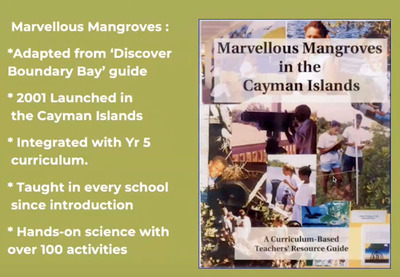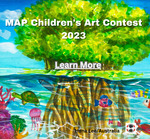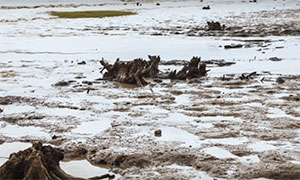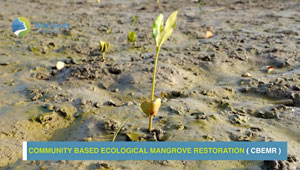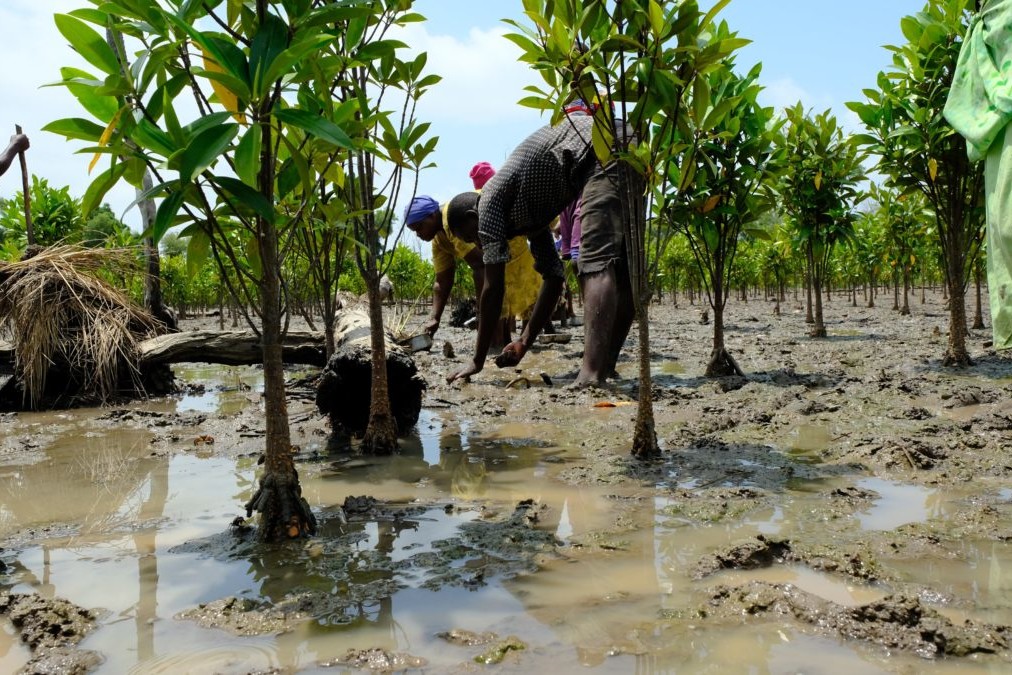The MAP News
|
|
FEATURED STORYHigh-Quality, Nature-Based Solutions in Indonesia: Allying with Communities, Restoring Ecosystems
 INDONESIA - When implemented thoughtfully, nature-based climate-action projects support biodiversity and connect communities, governments and other organizations to make long-lasting, impactful changes that no one group could do alone.ClimeCo, a sustainability solutions provider and project developer, is currently funding a locally led mangrove-reforestation project in Indonesia in close partnership with YAKOPI (Yayasan Konservasi Persisir Indonesia) — an Indonesia-based non-governmental organization responsible for planting and community engagement, and PUR Projet — an on-the-ground project developer providing critical oversight and guidance. The YAKOPI mangrove project encompasses 196 villages and approximately 1,100 hectares in the Aceh and North Sumatra regions, providing investment in local socio-economic development — including gender-equitable employment and ecotourism. Additionally, it promotes the implementation of sustainable, locally run pilot fisheries called silvofisheries — a form of sustainable aquaculture that integrates planting, maintenance and protection of mangrove forests in aquaculture ponds. ClimeCo relies heavily on its partners’ local knowledge to identify best practices and to implement proper planting techniques, such as recognizing and utilizing healthy and vigorous native saplings known as propagules. INDONESIA - When implemented thoughtfully, nature-based climate-action projects support biodiversity and connect communities, governments and other organizations to make long-lasting, impactful changes that no one group could do alone.ClimeCo, a sustainability solutions provider and project developer, is currently funding a locally led mangrove-reforestation project in Indonesia in close partnership with YAKOPI (Yayasan Konservasi Persisir Indonesia) — an Indonesia-based non-governmental organization responsible for planting and community engagement, and PUR Projet — an on-the-ground project developer providing critical oversight and guidance. The YAKOPI mangrove project encompasses 196 villages and approximately 1,100 hectares in the Aceh and North Sumatra regions, providing investment in local socio-economic development — including gender-equitable employment and ecotourism. Additionally, it promotes the implementation of sustainable, locally run pilot fisheries called silvofisheries — a form of sustainable aquaculture that integrates planting, maintenance and protection of mangrove forests in aquaculture ponds. ClimeCo relies heavily on its partners’ local knowledge to identify best practices and to implement proper planting techniques, such as recognizing and utilizing healthy and vigorous native saplings known as propagules.AFRICA
Assessing the use of West African Mangrove oyster as a bioindicator of aquatic environment in Densu Estuary economic viability  GHANA - Invisible fisheries such as oysters though minimal and less harvested in comparison to fishes, are of nutritional, medicinal and economic value. Oysters are a source of nutrients in the form of protein to many people in West Africa including Ghana. The shells provide calcium and are used in the preparation of poultry and livestock feeds. In addition, the shells serve as an ingredient in paint preparations, a rough base for footpaths, and cement for building and raw material for pharmaceutical industries. Ecologically, sessile organisms like oysters are important in the aquatic food chain. Oysters are filter feeders and while they feed on plankton, they help improve on water quality. The settling behavior of oyster spats with time, form reefs which provide structured habitat in estuaries and lagoons for many fish species and crabs. In Ghana, the West African Mangrove Oyster (WAMO) is widely distributed occurring in mangroves, sediments and compact substrates of coastal water bodies. In the country, oyster populations in estuaries and lagoons are declining. As at 1996, about nine (9) out of the 41 wetland ecosystems lost their oyster populations according to research GHANA - Invisible fisheries such as oysters though minimal and less harvested in comparison to fishes, are of nutritional, medicinal and economic value. Oysters are a source of nutrients in the form of protein to many people in West Africa including Ghana. The shells provide calcium and are used in the preparation of poultry and livestock feeds. In addition, the shells serve as an ingredient in paint preparations, a rough base for footpaths, and cement for building and raw material for pharmaceutical industries. Ecologically, sessile organisms like oysters are important in the aquatic food chain. Oysters are filter feeders and while they feed on plankton, they help improve on water quality. The settling behavior of oyster spats with time, form reefs which provide structured habitat in estuaries and lagoons for many fish species and crabs. In Ghana, the West African Mangrove Oyster (WAMO) is widely distributed occurring in mangroves, sediments and compact substrates of coastal water bodies. In the country, oyster populations in estuaries and lagoons are declining. As at 1996, about nine (9) out of the 41 wetland ecosystems lost their oyster populations according to researchStop criminalizing pipeline protesters! 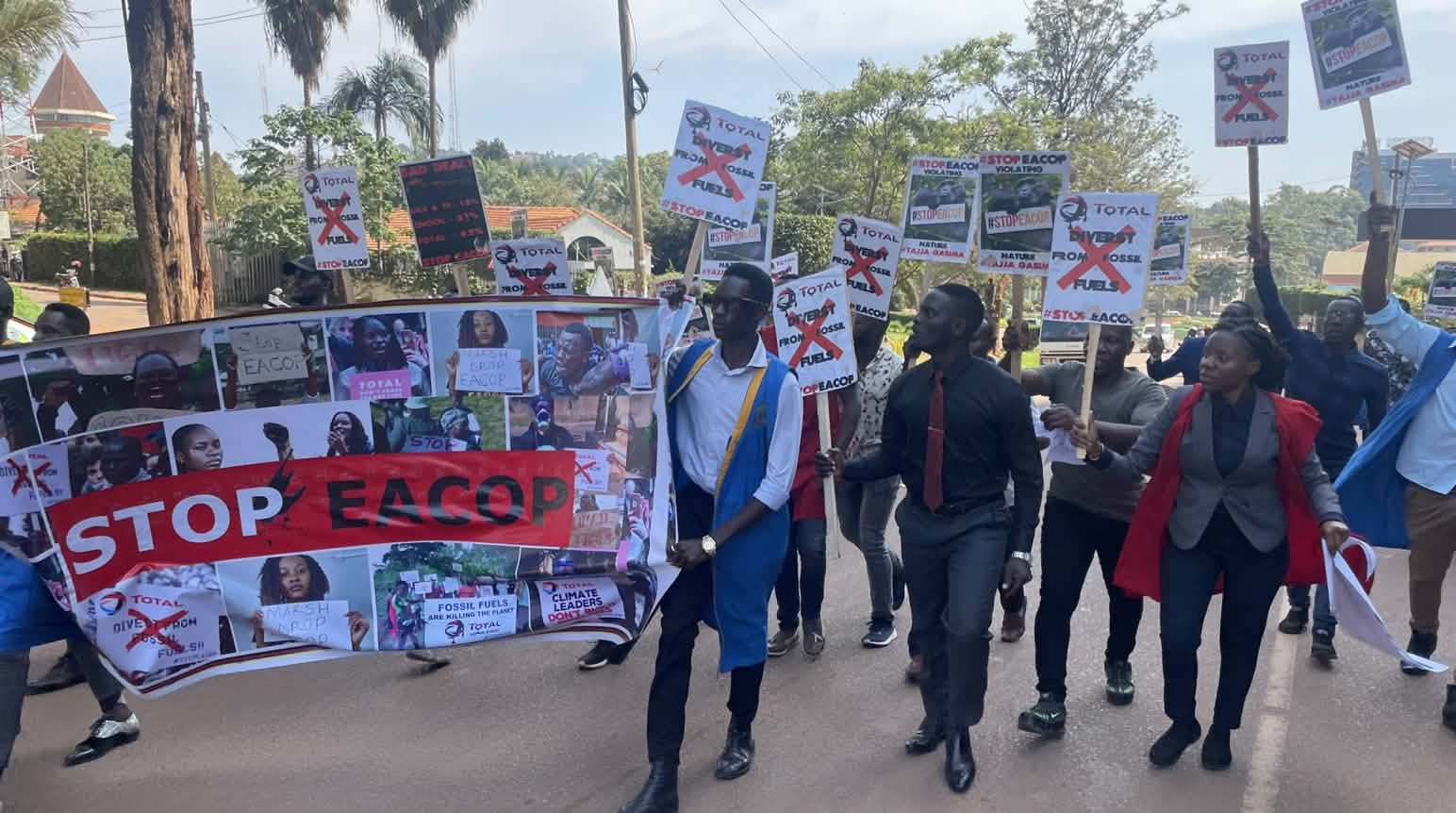 UGANDA - Authorities in Uganda are cracking down on critics of fossil fuel projects. Nine university students were arrested and are awaiting trial in Kampala for protesting against the EACOP pipeline. The threat of legal action is nerve-wracking and potentially costly for the accused. According to the activists, the prosecutor’s intention is to silence critics. The proposed $3.5-billion East African Crude Oil Pipeline (EACOP), would ship crude oil from Lake Albert in Uganda to global markets through a port on Tanzania's Indian Ocean coast. Development groups have raised alarm about the impacts on the climate - saying the pipeline will generate 34 million tonnes of carbon emissions annually - and on communities, as an estimated 14,000 households are at risk of losing their land. But climate campaigners are increasingly being targeted and stifled under the Public Management Order Act and legislation governing NGOs, said Dickens Kamugisha, chief executive of the Kampala-based Africa Institute for Energy Governance (AFIEGO). Let the students know that they are not alone, and that the international community stands behind them. UGANDA - Authorities in Uganda are cracking down on critics of fossil fuel projects. Nine university students were arrested and are awaiting trial in Kampala for protesting against the EACOP pipeline. The threat of legal action is nerve-wracking and potentially costly for the accused. According to the activists, the prosecutor’s intention is to silence critics. The proposed $3.5-billion East African Crude Oil Pipeline (EACOP), would ship crude oil from Lake Albert in Uganda to global markets through a port on Tanzania's Indian Ocean coast. Development groups have raised alarm about the impacts on the climate - saying the pipeline will generate 34 million tonnes of carbon emissions annually - and on communities, as an estimated 14,000 households are at risk of losing their land. But climate campaigners are increasingly being targeted and stifled under the Public Management Order Act and legislation governing NGOs, said Dickens Kamugisha, chief executive of the Kampala-based Africa Institute for Energy Governance (AFIEGO). Let the students know that they are not alone, and that the international community stands behind them.AMERICASManual for the ecological restoration of mangroves in the Mesoamerican Reef System and the Wider Caribbean MESOAMERICA - Mangroves in the Mesoamerican Reef Region (MAR) and the Wider Caribbean are the economic foundation of over 134 million people living in the coastal regions. Mangroves provide protection against floods and buffer against storms and hurricanes, to which the region is highly vulnerable. Additionally, due to their close relationship with other ecosystems, such as coral reefs and seagrasses, mangroves and the ecosystem services they provide are the conservation pillars of coastal ecosystems. Among these services, the storage potential of blue carbon is one of the most essential services in mitigating the effects of climate change, in addition to supporting important tourism and fisheries industries. However, every year the extent of mangroves continues to decline due to the impacts of climate change, change in land use, and the overexploitation of resources. This manual contributes to strengthening local, national, and regional capacities for the ecological restoration of mangroves and the ecosystem services they provide in the MAR and the Wider Caribbean region. Within the framework of the Cartagena Convention and the United Nations Decade on Ecosystem Restoration 2021-2030, ecological restoration (ER) of mangroves is considered a Nature-based Solution (NbS) that allows addressing the effects of climate change. The objective of the manual is to guide and strengthen local and regional capacities of all those (individuals, groups, organizations) interested in recovering mangrove ecosystems in the Mesoamerican Reef Region (MAR) and the Wider Caribbean. MESOAMERICA - Mangroves in the Mesoamerican Reef Region (MAR) and the Wider Caribbean are the economic foundation of over 134 million people living in the coastal regions. Mangroves provide protection against floods and buffer against storms and hurricanes, to which the region is highly vulnerable. Additionally, due to their close relationship with other ecosystems, such as coral reefs and seagrasses, mangroves and the ecosystem services they provide are the conservation pillars of coastal ecosystems. Among these services, the storage potential of blue carbon is one of the most essential services in mitigating the effects of climate change, in addition to supporting important tourism and fisheries industries. However, every year the extent of mangroves continues to decline due to the impacts of climate change, change in land use, and the overexploitation of resources. This manual contributes to strengthening local, national, and regional capacities for the ecological restoration of mangroves and the ecosystem services they provide in the MAR and the Wider Caribbean region. Within the framework of the Cartagena Convention and the United Nations Decade on Ecosystem Restoration 2021-2030, ecological restoration (ER) of mangroves is considered a Nature-based Solution (NbS) that allows addressing the effects of climate change. The objective of the manual is to guide and strengthen local and regional capacities of all those (individuals, groups, organizations) interested in recovering mangrove ecosystems in the Mesoamerican Reef Region (MAR) and the Wider Caribbean.Dirty shrimp farms are punching a huge hole in the environment. A.I. could cut it in half  USA - Inside a humid warehouse in suburban Indianapolis, a company called Atarraya is using large metal containers and the latest technology to grow shrimp hundreds of miles from the ocean. At one end of the hangar-like building sit blue metal boxes that look similar to shipping containers. But instead of holding cargo for transport, they’re designed to grow Pacific whiteleg shrimp anywhere in the world, overseen by employees who don’t require specialized training. “The software does all the heavy lifting,” Daniel Russek, CEO of Mexico City– and Indianapolis-based Atarraya, tells Fortune Magazine during a tour of the company’s newly launched U.S. operation, which includes a small office building and a warehouse that it plans to fill with 20 of the micro shrimp farms. The software Russek refers to is cloud-based artificial intelligence that monitors water quality, regulates temperature and oxygenation, and feeds the shrimp. For Russek, the concept is a bet that Atarraya will be able not only to sell locally grown seafood itself but also to franchise its Shrimpbox technology to seafood distributors or farmers, whether they have aquaculture experience or not. When paired with renewable energy, this technology-powered, distributed seafood model could help reduce greenhouse gas emissions, especially as global demand for seafood rises. The Food and Agriculture Organization of the United Nations estimates that global per capita consumption of wild-caught and farmed aquatic animals will increase to 47 pounds annually in 2030 from 45 pounds in 2020, a year when global aquaculture production hit a record of 122.6 million metric tons. USA - Inside a humid warehouse in suburban Indianapolis, a company called Atarraya is using large metal containers and the latest technology to grow shrimp hundreds of miles from the ocean. At one end of the hangar-like building sit blue metal boxes that look similar to shipping containers. But instead of holding cargo for transport, they’re designed to grow Pacific whiteleg shrimp anywhere in the world, overseen by employees who don’t require specialized training. “The software does all the heavy lifting,” Daniel Russek, CEO of Mexico City– and Indianapolis-based Atarraya, tells Fortune Magazine during a tour of the company’s newly launched U.S. operation, which includes a small office building and a warehouse that it plans to fill with 20 of the micro shrimp farms. The software Russek refers to is cloud-based artificial intelligence that monitors water quality, regulates temperature and oxygenation, and feeds the shrimp. For Russek, the concept is a bet that Atarraya will be able not only to sell locally grown seafood itself but also to franchise its Shrimpbox technology to seafood distributors or farmers, whether they have aquaculture experience or not. When paired with renewable energy, this technology-powered, distributed seafood model could help reduce greenhouse gas emissions, especially as global demand for seafood rises. The Food and Agriculture Organization of the United Nations estimates that global per capita consumption of wild-caught and farmed aquatic animals will increase to 47 pounds annually in 2030 from 45 pounds in 2020, a year when global aquaculture production hit a record of 122.6 million metric tons.
ASIA Mangrove museum nearly funded - needs final help
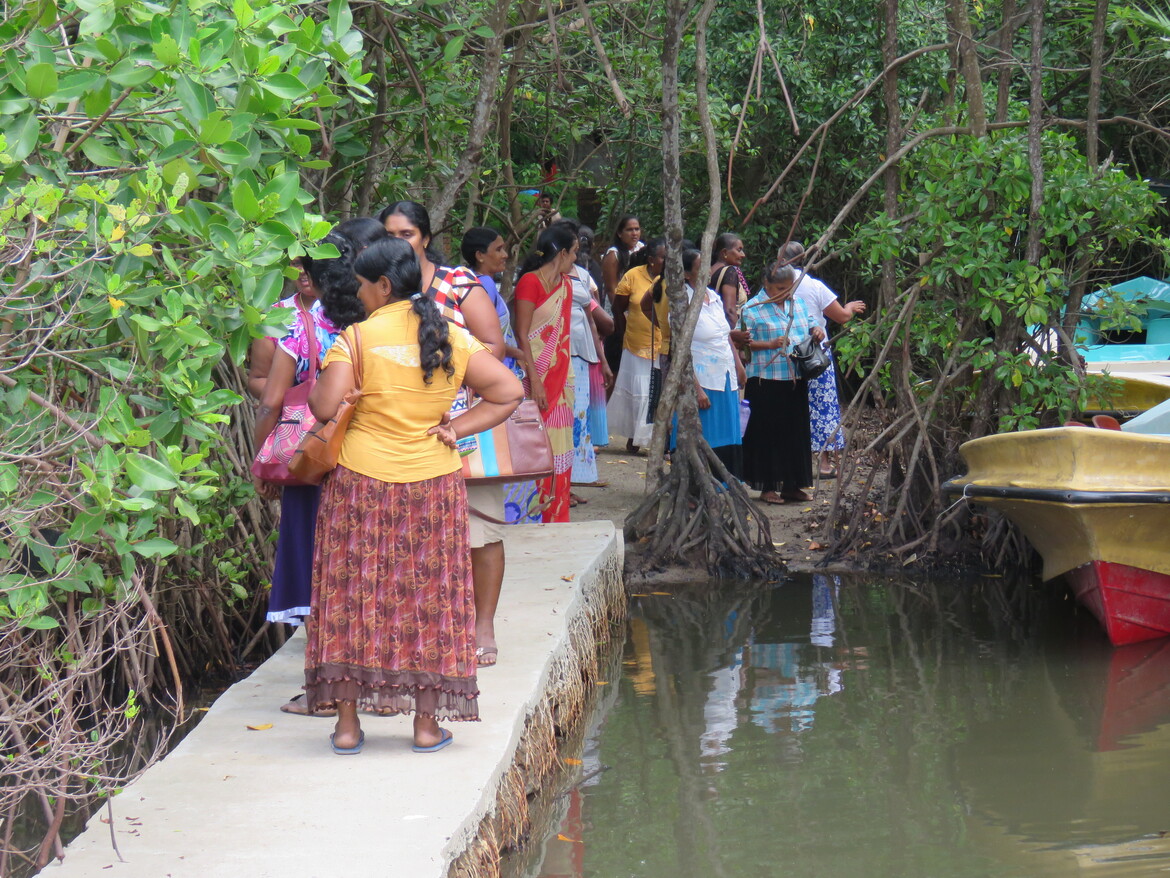 SRI LANKA - Thanks to several major donors, our crowdfunding campaign to save Sri Lanka's first-of-its-kind mangrove museum has almost reached its goal. Now it's up to supporters like you to get us over the finish line and ensure a bright future for this important, but struggling institution. Douglas Thesera has worked tirelessly to protect mangroves in Sri Lanka for decades, and today he serves as the director of the museum. He has a message of gratitude for our generous donors, who are helping him and his team continue their urgently needed work. For five years, Seacology worked with conservation leaders and coastal communities across Sri Lanka to protect and restore the island nation’s mangroves. Opened in 2016 in a celebration attended by then-president Maithripala Sirisena and other dignitaries, the Lanka Mangrove Museum serves as a repository of knowledge about the country’s threatened coastal wetlands, and is a top destination in the world for anyone who wants to learn about them. Nestled alongside a lagoon and surrounded by mangroves, the large facility is home to engaging displays about the 23 species of mangrove trees found in Sri Lanka and the incredible array of wildlife they support. Leading scientists visit the facility, and in past years it was one of the most popular destinations for school groups from across the country. It was even recognized by the national postal service with a commemorative stamp. SRI LANKA - Thanks to several major donors, our crowdfunding campaign to save Sri Lanka's first-of-its-kind mangrove museum has almost reached its goal. Now it's up to supporters like you to get us over the finish line and ensure a bright future for this important, but struggling institution. Douglas Thesera has worked tirelessly to protect mangroves in Sri Lanka for decades, and today he serves as the director of the museum. He has a message of gratitude for our generous donors, who are helping him and his team continue their urgently needed work. For five years, Seacology worked with conservation leaders and coastal communities across Sri Lanka to protect and restore the island nation’s mangroves. Opened in 2016 in a celebration attended by then-president Maithripala Sirisena and other dignitaries, the Lanka Mangrove Museum serves as a repository of knowledge about the country’s threatened coastal wetlands, and is a top destination in the world for anyone who wants to learn about them. Nestled alongside a lagoon and surrounded by mangroves, the large facility is home to engaging displays about the 23 species of mangrove trees found in Sri Lanka and the incredible array of wildlife they support. Leading scientists visit the facility, and in past years it was one of the most popular destinations for school groups from across the country. It was even recognized by the national postal service with a commemorative stamp.Mekong Delta shrimp farmers’ enthusiasm for working with mangroves is waning
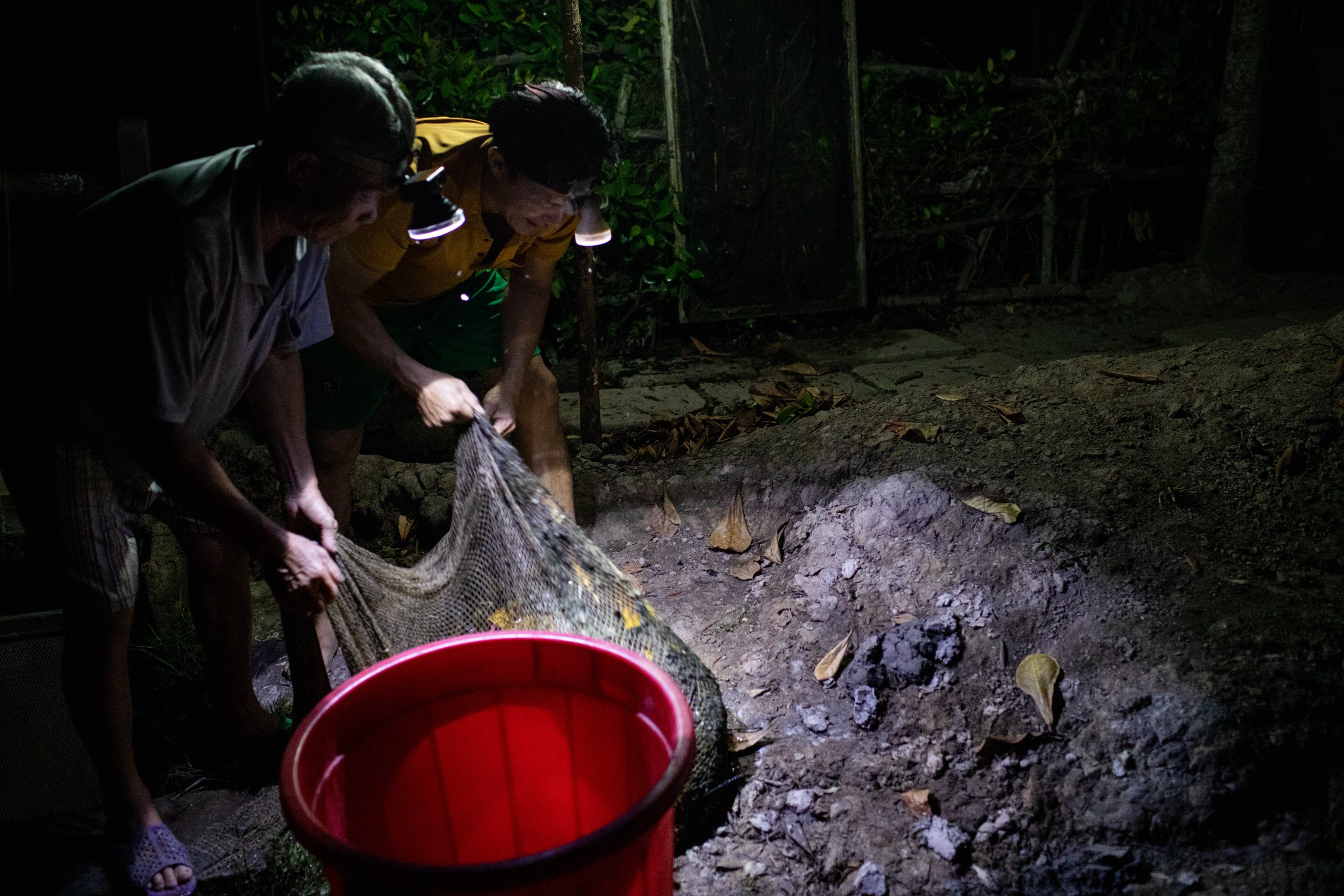 IETNAM - Leaving space for mangroves among the shrimp farms of Vietnam’s Mekong Delta has been a win-win for aquaculture and the environment, but farmers say the economic benefits of the model are slowing. Thac is signed up to an organic programme with a major seafood producer, under which farmers are not allowed to add fertiliser, antibiotics, growth promoters or other chemicals to the water. “Our shrimp, crabs, fish and our mangroves rely 100% on the environment,” he says. On paper, it’s a win-win: mangroves are saved, and farmers’ incomes are boosted. The rate of mangrove loss due to aquaculture in the Mekong Delta has fallen, from 2,440 hectares a year between 1973 and 1990 to 1,490 hectares a year between 2010 and 2020. But a closer look at this mangrove stronghold in the world’s third–largest delta reveals a more complex picture. Despite the benefits of the integrated shrimp-mangrove model, tension remains between the needs of the forest and the aquaculture industry – and this is being aggravated by both climate change and the effects of upstream dams. Most of the land of the Mekong Delta owes its existence to mangroves. “It’s a magical tree that can digest salty water and dirty air and thrive,” says Vo Quoc Tuan, a mangrove specialist at Can Tho University. “Mangroves have been and are still being underappreciated, not just by farmers but also the general public and… the government.” IETNAM - Leaving space for mangroves among the shrimp farms of Vietnam’s Mekong Delta has been a win-win for aquaculture and the environment, but farmers say the economic benefits of the model are slowing. Thac is signed up to an organic programme with a major seafood producer, under which farmers are not allowed to add fertiliser, antibiotics, growth promoters or other chemicals to the water. “Our shrimp, crabs, fish and our mangroves rely 100% on the environment,” he says. On paper, it’s a win-win: mangroves are saved, and farmers’ incomes are boosted. The rate of mangrove loss due to aquaculture in the Mekong Delta has fallen, from 2,440 hectares a year between 1973 and 1990 to 1,490 hectares a year between 2010 and 2020. But a closer look at this mangrove stronghold in the world’s third–largest delta reveals a more complex picture. Despite the benefits of the integrated shrimp-mangrove model, tension remains between the needs of the forest and the aquaculture industry – and this is being aggravated by both climate change and the effects of upstream dams. Most of the land of the Mekong Delta owes its existence to mangroves. “It’s a magical tree that can digest salty water and dirty air and thrive,” says Vo Quoc Tuan, a mangrove specialist at Can Tho University. “Mangroves have been and are still being underappreciated, not just by farmers but also the general public and… the government.”*Articles in this newsletter may mention practices being used and/or show exagerated results being claimed without proof. Stories are presented here in effort to show mangrove related activity around the world and do not necessarily reflect Mangrove Action Project's views or mangrove restoration best-practices. NOTICE
ACTION ALERTS
|
|
|
Mangrove Action Project Click here to view past newsletters
|
|
Search News Archive
Saturday, May 20, 2023
MAP News Issue #572 - May 20, 2023
Saturday, May 6, 2023
MAP News #571 - May 6, 2023
The MAP News
|
|
Sea Grant Blue Carbon Law Symposium May 17-18, 2023 in Athens, GAFEATURED STORYDecades of Mangrove Forest Change: What does it mean for nature, people and the climate?
 GLOBAL - Decades of Mangrove Forest Change: What does it mean for nature, people and the climate? reviews the extent of mangrove forest cover and considers the potential consequences of changes in mangrove extent for more than 1,000 mangrove associated species including birds, fish, plants, mammals, reptiles and amphibians. Further, the report analyses the potential consequences of changes in mangrove extent on carbon storage and for small scale fishers, demonstrating that restoration is clearly needed but showcases encouraging examples of mangrove recovery. The report highlights the need to improve our knowledge of what species use and depend upon mangroves in order to better understand the consequences of changes in mangroves on people and our natural world. It also emphasises the need for integrated thinking, by conserving, restoring and sustainably managing mangrove ecosystems in a coherent and inclusive way, and coordinating management and governance actions across local, national, regional and international scales. We urgently need to transform our relationship with nature and transition to a more equitable and sustainable future in which activities that result in ecosystem loss and degradation are a thing of the past. GLOBAL - Decades of Mangrove Forest Change: What does it mean for nature, people and the climate? reviews the extent of mangrove forest cover and considers the potential consequences of changes in mangrove extent for more than 1,000 mangrove associated species including birds, fish, plants, mammals, reptiles and amphibians. Further, the report analyses the potential consequences of changes in mangrove extent on carbon storage and for small scale fishers, demonstrating that restoration is clearly needed but showcases encouraging examples of mangrove recovery. The report highlights the need to improve our knowledge of what species use and depend upon mangroves in order to better understand the consequences of changes in mangroves on people and our natural world. It also emphasises the need for integrated thinking, by conserving, restoring and sustainably managing mangrove ecosystems in a coherent and inclusive way, and coordinating management and governance actions across local, national, regional and international scales. We urgently need to transform our relationship with nature and transition to a more equitable and sustainable future in which activities that result in ecosystem loss and degradation are a thing of the past.GLOBAL
Machine learning could help save mangrove forests GLOBAL - Mangrove forests, essential components of tropical and subtropical coastal zones, provide numerous goods and ecosystem services crucial for ecological balance. However, these critical habitats are under threat as they continue to disappear and degrade across the globe. One way to facilitate effective conservation and promote policies for mangrove protection is to carefully assess these habitats, monitor their changes, and identify fragmented areas. Unfortunately, obtaining this vital information is often a challenging endeavor. Dr. Neda Bihamta Toosi, a postdoc at Isfahan University of Technology in Iran specializes in landscape pattern changes using remote sensing. She explained that since mangrove forests are located in tidal zones and marshy areas, they are hardly accessible. In a recent study published in the journal Nature Conservation, Dr. Bihamta Toosi, alongside a team of authors, investigated the potential of using machine learning to classify these delicate ecosystems. To compare the performance of various combinations of satellite images and classification techniques, the researchers assessed how well each method could map mangrove ecosystems. “We developed a novel method with a focus on landscape ecology for mapping the spatial disturbance of mangrove ecosystems,” said Dr. Bihamta Toosi. “The provided disturbance maps facilitate future management and planning activities for mangrove ecosystems in an efficient way, thus supporting the sustainable conservation of these coastal areas.” GLOBAL - Mangrove forests, essential components of tropical and subtropical coastal zones, provide numerous goods and ecosystem services crucial for ecological balance. However, these critical habitats are under threat as they continue to disappear and degrade across the globe. One way to facilitate effective conservation and promote policies for mangrove protection is to carefully assess these habitats, monitor their changes, and identify fragmented areas. Unfortunately, obtaining this vital information is often a challenging endeavor. Dr. Neda Bihamta Toosi, a postdoc at Isfahan University of Technology in Iran specializes in landscape pattern changes using remote sensing. She explained that since mangrove forests are located in tidal zones and marshy areas, they are hardly accessible. In a recent study published in the journal Nature Conservation, Dr. Bihamta Toosi, alongside a team of authors, investigated the potential of using machine learning to classify these delicate ecosystems. To compare the performance of various combinations of satellite images and classification techniques, the researchers assessed how well each method could map mangrove ecosystems. “We developed a novel method with a focus on landscape ecology for mapping the spatial disturbance of mangrove ecosystems,” said Dr. Bihamta Toosi. “The provided disturbance maps facilitate future management and planning activities for mangrove ecosystems in an efficient way, thus supporting the sustainable conservation of these coastal areas.”
AFRICA
Longstanding behavioural stability in West Africa extends to the Middle Pleistocene at Bargny, coastal Senegal Editors note: We include this story to highlight the importance mangroves have played in the survival of the human species throughout history 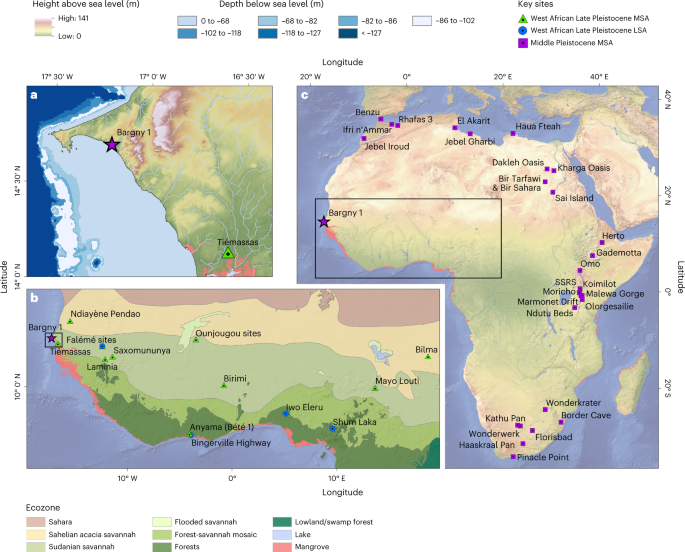 AFRICAN CONTINENT - Middle Stone Age (MSA) technologies first appear in the archaeological records of northern, eastern and southern Africa during the Middle Pleistocene epoch. The absence of MSA sites from West Africa limits evaluation of shared behaviours across the continent during the late Middle Pleistocene and the diversity of subsequent regionalized trajectories. Here we present evidence for the late Middle Pleistocene MSA occupation of the West African littoral at Bargny, Senegal, dating to 150 thousand years ago. Palaeoecological evidence suggests that Bargny was a hydrological refugium during the MSA occupation, supporting estuarine conditions during Middle Pleistocene arid phases. The stone tool technology at Bargny presents characteristics widely shared across Africa in the late Middle Pleistocene but which remain uniquely stable in West Africa to the onset of the Holocene. We explore how the persistent habitability of West African environments, including mangroves, contributes to distinctly West African trajectories of behavioural stability. Mangroves have high habitat heterogeneity and accessible subsistence resources, making them potential hotspots for Pleistocene forager populations. Adaptation to exploit these resources has the potential to open new axes for population expansions in West Africa. AFRICAN CONTINENT - Middle Stone Age (MSA) technologies first appear in the archaeological records of northern, eastern and southern Africa during the Middle Pleistocene epoch. The absence of MSA sites from West Africa limits evaluation of shared behaviours across the continent during the late Middle Pleistocene and the diversity of subsequent regionalized trajectories. Here we present evidence for the late Middle Pleistocene MSA occupation of the West African littoral at Bargny, Senegal, dating to 150 thousand years ago. Palaeoecological evidence suggests that Bargny was a hydrological refugium during the MSA occupation, supporting estuarine conditions during Middle Pleistocene arid phases. The stone tool technology at Bargny presents characteristics widely shared across Africa in the late Middle Pleistocene but which remain uniquely stable in West Africa to the onset of the Holocene. We explore how the persistent habitability of West African environments, including mangroves, contributes to distinctly West African trajectories of behavioural stability. Mangroves have high habitat heterogeneity and accessible subsistence resources, making them potential hotspots for Pleistocene forager populations. Adaptation to exploit these resources has the potential to open new axes for population expansions in West Africa.AMERICASChanges in mangrove coverage classification criteria could impact the conservation of mangroves in Mexico MEXICO - Accurate estimates of habitat extent and rates of change are crucial inputs for the global, regional, and national assessments that guide policy-making and prioritize strategies. This can contribute to an understanding of ecosystems in the landscape for their use, management, and preservation. Mangroves are one of the types of ecosystems in which estimation discrepancies have been analyzed to determine the impacts of data quality on conservation and policy-making. We identify significant discrepancies in the extent of the last map of Mexican mangroves (i.e., 2020) produced by the Mexican Mangrove Monitoring System (MMMS). We performed a comparative assessment between the 2020 and 2015 maps by using geographical information systems to analyze the spatial extent across these years and estimate the accuracy of map changes with airborne data. We observed a spurious gain of 129,531 ha between 2015 and 2020, including 102,610 ha (79% of total changes) in the Sian Ka'an Biosphere Reserve and its surroundings. Furthermore, the mangrove definition changed, causing the MMMS to map other coastal wetlands with the presence of Rhizophora mangle scrubs dispersed in the landscape. The analysis of MMMS airborne data demonstrates that this significant increase is due to changes in mangrove mapping criteria and definitions. MEXICO - Accurate estimates of habitat extent and rates of change are crucial inputs for the global, regional, and national assessments that guide policy-making and prioritize strategies. This can contribute to an understanding of ecosystems in the landscape for their use, management, and preservation. Mangroves are one of the types of ecosystems in which estimation discrepancies have been analyzed to determine the impacts of data quality on conservation and policy-making. We identify significant discrepancies in the extent of the last map of Mexican mangroves (i.e., 2020) produced by the Mexican Mangrove Monitoring System (MMMS). We performed a comparative assessment between the 2020 and 2015 maps by using geographical information systems to analyze the spatial extent across these years and estimate the accuracy of map changes with airborne data. We observed a spurious gain of 129,531 ha between 2015 and 2020, including 102,610 ha (79% of total changes) in the Sian Ka'an Biosphere Reserve and its surroundings. Furthermore, the mangrove definition changed, causing the MMMS to map other coastal wetlands with the presence of Rhizophora mangle scrubs dispersed in the landscape. The analysis of MMMS airborne data demonstrates that this significant increase is due to changes in mangrove mapping criteria and definitions. Save Endangered Species From SpaceX Urge SpaceX and the Federal Aviation Administration to do more to protect Boca Chica and its wildlife. SIGN THE PETITION Elon Musk’s SpaceX launch site threatens wildlife 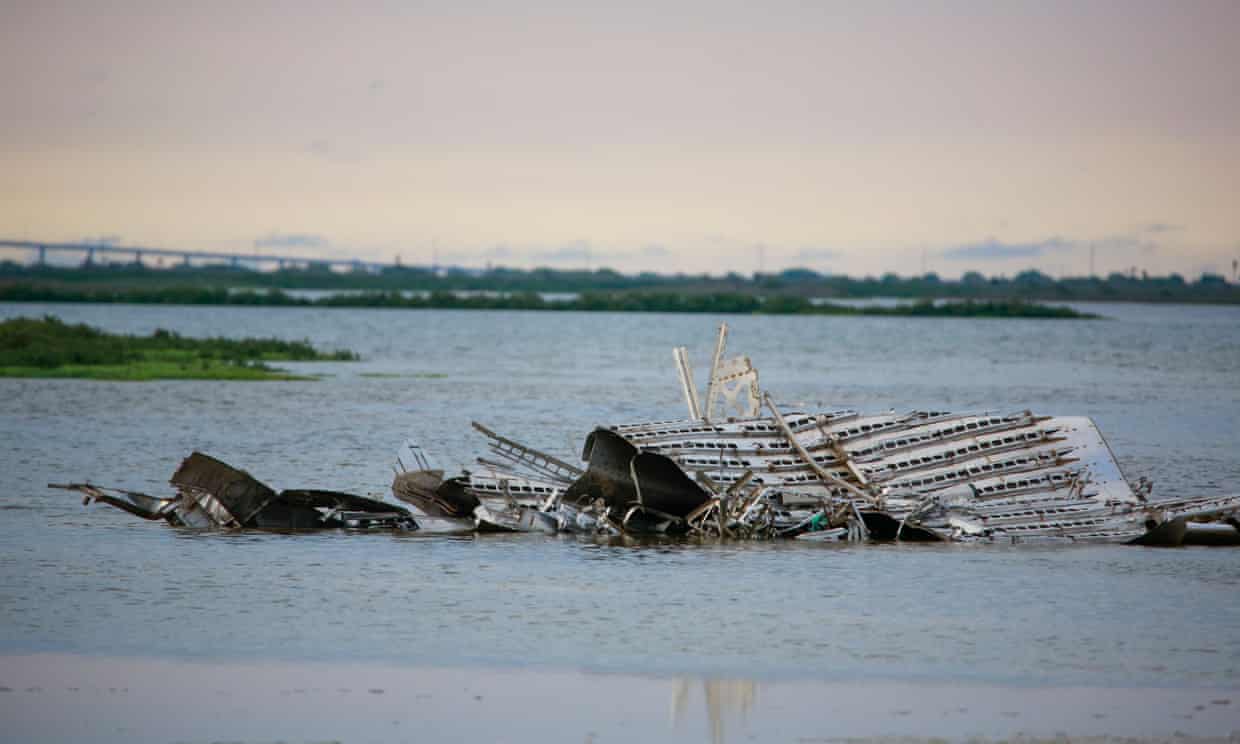 The site in Boca Chica, south Texas is surrounded by protected lands that host a huge range of local wildlife including turtles and hundreds of bird species. David Newstead, director of the nonprofit Coastal Bend Bays and Estuaries, felt sick as he saw the fireball explode on the launchpad. SpaceX’s site is surrounded by state and federally protected lands. The explosion littered parts of the delicate ecosystem of the Boca Chica tract of the Lower Rio Grande Valley national wildlife refuge – comprising tidal flats, beaches, grasslands and coastal dunes that host a huge range of wildlife – with rocket debris “I knew from the other explosions that the rocket would be scattered all over the refuge,” Newstead said. Cleanup took three months, he added The private space race is already causing concern about the potential climate impacts of the fuel needed to propel the rockets. But environmentalists on the ground in south Texas say SpaceX’s testing site is having more immediate impacts. The refuge is made up of parcels the US Fish and Wildlife Service has been buying or leasing since 1979 when the federal agency came up with its plan to preserve as much of the land tucked against the Gulf Coast and the mouth of the Rio Grande River as possible, creating a patchwork of federally managed refuge land. The site in Boca Chica, south Texas is surrounded by protected lands that host a huge range of local wildlife including turtles and hundreds of bird species. David Newstead, director of the nonprofit Coastal Bend Bays and Estuaries, felt sick as he saw the fireball explode on the launchpad. SpaceX’s site is surrounded by state and federally protected lands. The explosion littered parts of the delicate ecosystem of the Boca Chica tract of the Lower Rio Grande Valley national wildlife refuge – comprising tidal flats, beaches, grasslands and coastal dunes that host a huge range of wildlife – with rocket debris “I knew from the other explosions that the rocket would be scattered all over the refuge,” Newstead said. Cleanup took three months, he added The private space race is already causing concern about the potential climate impacts of the fuel needed to propel the rockets. But environmentalists on the ground in south Texas say SpaceX’s testing site is having more immediate impacts. The refuge is made up of parcels the US Fish and Wildlife Service has been buying or leasing since 1979 when the federal agency came up with its plan to preserve as much of the land tucked against the Gulf Coast and the mouth of the Rio Grande River as possible, creating a patchwork of federally managed refuge land.Kennedy Space Center ‘Rescues’ Mangroves During Shoreline Restoration  USA - With its 140,000 acres located along the Atlantic coastline and within the Indian River Lagoon estuary, NASA’s Kennedy Space Center has long taken measures to ensure its shorelines remain resilient. The most recent effort includes rescuing some of the greatest allies against erosion: mangroves. “Mangroves have a root structure that stabilizes the shoreline – nature’s original infrastructure for shoreline protection,” said Jeffrey Collins, environmental protection specialist in the spaceport’s Environmental Management Branch. “They also provide structure for nesting and roosting birds, habitat and nursery areas for aquatic species, and benefits to lagoon water quality.” A team member from Kennedy’s Environmental Management Branch works to remove a mangrove seedling on the shoreline of Kennedy Athletic, Recreation, and Social (KARS) Park at Kennedy Space Center in Florida on April 12, 2023. The seedlings will be replanted after upcoming restoration efforts to create a living shoreline more resistant to erosion. It’s an odd concept thinking mangroves need to be ‘rescued’ because they do really well in harsh environments,” said Collins. “While the project already includes some planting for stabilization, these additional mangroves will provide a jump-start toward a fully protected shoreline with ecological benefits.” USA - With its 140,000 acres located along the Atlantic coastline and within the Indian River Lagoon estuary, NASA’s Kennedy Space Center has long taken measures to ensure its shorelines remain resilient. The most recent effort includes rescuing some of the greatest allies against erosion: mangroves. “Mangroves have a root structure that stabilizes the shoreline – nature’s original infrastructure for shoreline protection,” said Jeffrey Collins, environmental protection specialist in the spaceport’s Environmental Management Branch. “They also provide structure for nesting and roosting birds, habitat and nursery areas for aquatic species, and benefits to lagoon water quality.” A team member from Kennedy’s Environmental Management Branch works to remove a mangrove seedling on the shoreline of Kennedy Athletic, Recreation, and Social (KARS) Park at Kennedy Space Center in Florida on April 12, 2023. The seedlings will be replanted after upcoming restoration efforts to create a living shoreline more resistant to erosion. It’s an odd concept thinking mangroves need to be ‘rescued’ because they do really well in harsh environments,” said Collins. “While the project already includes some planting for stabilization, these additional mangroves will provide a jump-start toward a fully protected shoreline with ecological benefits.”
ASIA A Philippine town and its leaders show how mangrove restoration can succeed
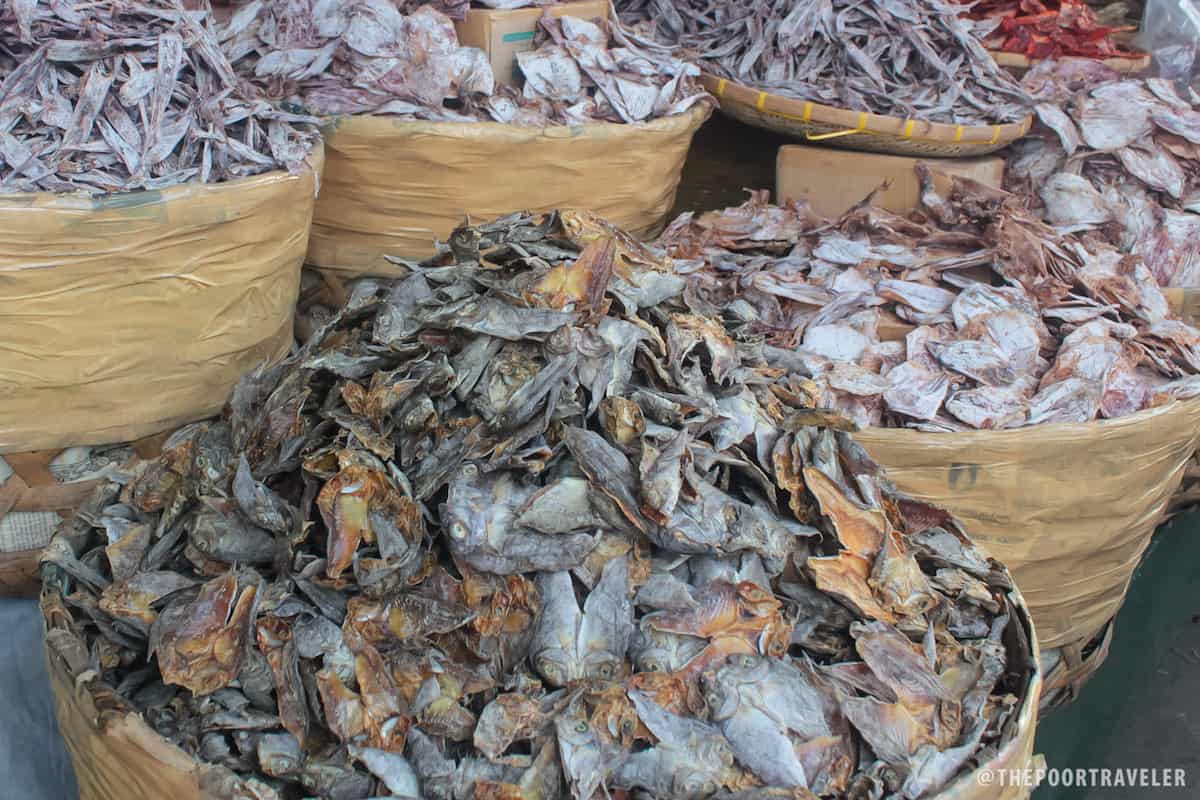 PHILIPPINES - Working quietly before a bucket of rabbitfish, known locally as danggit, two women precisely cut open each fish with square knives, gutting and deboning before repeating the process. A third woman scrubs each mirror-image fish fillet, about the size of a cigarette pack. “Today is a slow work day, but during peak seasons, such as November and December, we have a long table of 30 workers here for a ton of danggit catch,” Racquel Diño told Mongabay during a visit in mid-February. Processing danggit into dried, salted fish has become her main source of income, as it has for the two other women working today. Danggit graze on seagrass that cover 800 hectares (nearly 2,000 acres) of the seabed off the town of Prieto Diaz in Sorsogon province, 360 miles (580 kilometers) south of Manila. Prieto Diaz’s integrated marine ecosystems of seagrass meadows, coral reefs and mangrove forests are thriving, thanks to more than three decades of community-led coastal reforestation and protection efforts. With a stable population of diverse trees, its 1,034-hectare (2,555-acre) mangrove ecosystem has grown to be the largest in the Bicol region, the southeastern-most peninsula of the main island of Luzon. PHILIPPINES - Working quietly before a bucket of rabbitfish, known locally as danggit, two women precisely cut open each fish with square knives, gutting and deboning before repeating the process. A third woman scrubs each mirror-image fish fillet, about the size of a cigarette pack. “Today is a slow work day, but during peak seasons, such as November and December, we have a long table of 30 workers here for a ton of danggit catch,” Racquel Diño told Mongabay during a visit in mid-February. Processing danggit into dried, salted fish has become her main source of income, as it has for the two other women working today. Danggit graze on seagrass that cover 800 hectares (nearly 2,000 acres) of the seabed off the town of Prieto Diaz in Sorsogon province, 360 miles (580 kilometers) south of Manila. Prieto Diaz’s integrated marine ecosystems of seagrass meadows, coral reefs and mangrove forests are thriving, thanks to more than three decades of community-led coastal reforestation and protection efforts. With a stable population of diverse trees, its 1,034-hectare (2,555-acre) mangrove ecosystem has grown to be the largest in the Bicol region, the southeastern-most peninsula of the main island of Luzon.The world’s best rainforest guardians already live ther  INDONESIA - By midmorning, beams of tropical sun cut through the rainforest canopy, illuminating a bamboo hut in a rare clearing of trees. Inside, a wrinkled old man, sitting cross-legged with his eyes shut, whispers blessings to the Earth. After the spiritual leader, the Ammatoa, goes silent, groups of men wearing dark indigo sarongs jump to their feet and head into the forest carrying an offering of rattan baskets full of rice, bananas and lighted candles. “The Earth is angry with us,” said Budi, a barefoot boy crouching on the hut’s edge. “That is why the weather is getting worse. There are more rains and floods. It is getting hotter. It is because we have sinned.” This ritual is known as the Andingingi, held once a year by the Kajang, a tribe from the Indonesian island of Sulawesi. Like many parts of the world, their land has been hit by more extreme weather because of climate change. But as satellite imagery shows, the Kajang’s dense primary forest is free from roads and development, soaking up violent rains that devastate other parts of the island. As global deforestation continues at alarming rates, the empowerment of Indigenous peoples such as the Kajang is emerging as a key way to protect the world’s rainforests. A spate of recent research suggests that when armed with land rights, these communities, whose members manage half the world’s land and 80 percent of its biodiversity, are remarkably effective custodians. INDONESIA - By midmorning, beams of tropical sun cut through the rainforest canopy, illuminating a bamboo hut in a rare clearing of trees. Inside, a wrinkled old man, sitting cross-legged with his eyes shut, whispers blessings to the Earth. After the spiritual leader, the Ammatoa, goes silent, groups of men wearing dark indigo sarongs jump to their feet and head into the forest carrying an offering of rattan baskets full of rice, bananas and lighted candles. “The Earth is angry with us,” said Budi, a barefoot boy crouching on the hut’s edge. “That is why the weather is getting worse. There are more rains and floods. It is getting hotter. It is because we have sinned.” This ritual is known as the Andingingi, held once a year by the Kajang, a tribe from the Indonesian island of Sulawesi. Like many parts of the world, their land has been hit by more extreme weather because of climate change. But as satellite imagery shows, the Kajang’s dense primary forest is free from roads and development, soaking up violent rains that devastate other parts of the island. As global deforestation continues at alarming rates, the empowerment of Indigenous peoples such as the Kajang is emerging as a key way to protect the world’s rainforests. A spate of recent research suggests that when armed with land rights, these communities, whose members manage half the world’s land and 80 percent of its biodiversity, are remarkably effective custodians.OCEANA Mangroves on Eighty Mile Beach
 AUSTRALIA - An astronaut aboard the International Space Station photographed the western coast of Australia where mangrove forests thrive along Eighty Mile Beach. These mangrove forests are located within the Eighty Mile Beach Marine Park, a 220-kilometer (140-mile) stretch of protected beach and coastal waters in western Australia. The marine park includes the rocky shores of Cape Keraudren, where a coastal nature reserve provides access to mangrove forests and seagrass meadows. The area shown in this photograph is an example of an intertidal zone ecosystem—where the coastline is above seawater at low tide and submerged in seawater at high tide. As low tide approaches, the ebb current takes seawater toward the Indian Ocean and exposes salt flats, intertidal flats, and mangrove forests. As high tide approaches, the flood current takes seawater inland and floods the coastline. During both incoming and outgoing tides, seawater flows through coastal waterways called tidal creeks. Mangrove trees withstand the fluctuation between high and low tide by means of an elongated root system that is exposed at low tide. Local fauna, such as the north-western mangrove seasnake, can be found living in this root system. Other species, like the mangrove golden whistler, are found in the tree canopy. AUSTRALIA - An astronaut aboard the International Space Station photographed the western coast of Australia where mangrove forests thrive along Eighty Mile Beach. These mangrove forests are located within the Eighty Mile Beach Marine Park, a 220-kilometer (140-mile) stretch of protected beach and coastal waters in western Australia. The marine park includes the rocky shores of Cape Keraudren, where a coastal nature reserve provides access to mangrove forests and seagrass meadows. The area shown in this photograph is an example of an intertidal zone ecosystem—where the coastline is above seawater at low tide and submerged in seawater at high tide. As low tide approaches, the ebb current takes seawater toward the Indian Ocean and exposes salt flats, intertidal flats, and mangrove forests. As high tide approaches, the flood current takes seawater inland and floods the coastline. During both incoming and outgoing tides, seawater flows through coastal waterways called tidal creeks. Mangrove trees withstand the fluctuation between high and low tide by means of an elongated root system that is exposed at low tide. Local fauna, such as the north-western mangrove seasnake, can be found living in this root system. Other species, like the mangrove golden whistler, are found in the tree canopy.Like this newsletter?  Pease consider donating to MAP to keep it going. Giving could never be easier *Articles in this newsletter may mention practices being used and/or show exagerated results being claimed without proof. Stories are presented here in effort to show mangrove related activity around the world and do not necessarily reflect Mangrove Action Project's views or mangrove restoration best-practices. NOTICE
ACTION ALERTS
|
|
|
Mangrove Action Project Click here to view past newsletters
|
|
-
The community of adults and youth in Cayman Islands has come together recently to release a series of educational videos. Each is geared to...
-
By Alfredo Quarto, Program & Policy Director Co-founder, MAP There is a rather urgent situation concerning the bio-invasion of the Son...
-
By: Isabel Robinson, MAP Volunteer Intern Some months ago I decided to come to Thailand and do an internship in mangrove conservation, ...
MAP News Issue #596 = April 20, 2024
ENTRIES NOW OPEN! Mangrove Photography Awards 2024 10 Years Celebrating Mangroves GLOBAL - MAP has launched our 10th Mangrove Photograp...


